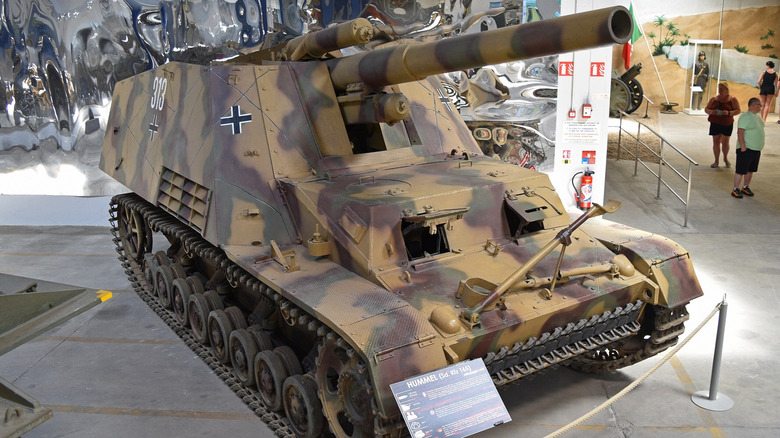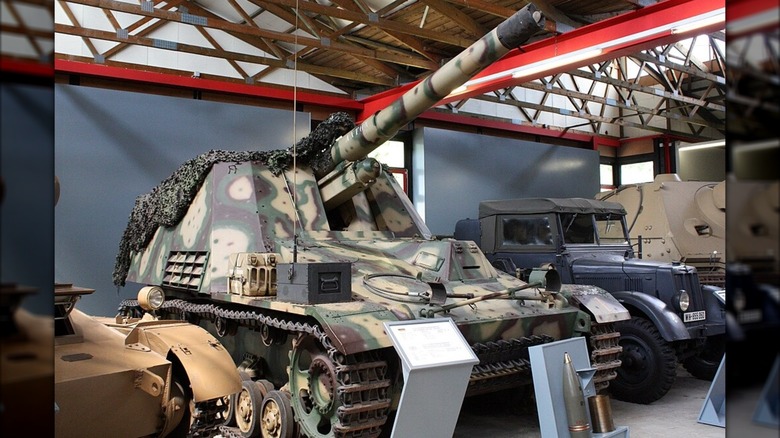Why Was The WW2 German Hummel Tank Called 'Bumblebee?'
When most people today hear the word "bumblebee," they're prone to think of the black and yellow Autobot Camaro from the "Transformers" films and animated series. The particular Nazi bumblebee we're talking about here is not that, but ironically, it morphed from a number of different armored vehicles that came before it. One could say it was, in a very real sense, a transformative combat vehicle.
The Panzerfeldhaubitze s.F.H.18/1 (Sf) auf Geschützwagen III/IV Hummel, Sd.Kfz. 165 was a self-propelled artillery gun. The world salad of a name is certainly intimidating, but we'll break it down for you. Panzerfeldhaubitze stands for "armored field howitzer," while Geschützwagen translates to "gun vehicle," and the "Sf" designation is for Selbstfahrlafette or "self-propelled carriage." Last but not least, the word Hummel is German for, you guessed it, "bumblebee" which is the nickname this vehicle was bestowed with. However, by all accounts, Hitler hated that name because he didn't think it suited something that packed far more firepower than a tiny bee sting.
This armored vehicle was quick, borrowing both the suspension and the engine from a Panzer IV (made by Maybach, the ultra-luxury car brand from Mercedes-Benz). Its primary duty was to provide artillery support for the speedy forward-advancing Panzer divisions. It also used the steering system from a Panzer III (thus the III/IV in the elongated name). Hummels could directly fire on a target if visible, but more often than not, they launched artillery from the rear, nowhere near the front line, and indirectly fired on targets based on where they were designated on a map.
The Hummel's heavy gun did more than sting the enemy
What made the Hummel so formidable was the 15-centimeter heavy howitzer (the "18" number in the lengthy official name) it carried. This main gun weighed over six tons alone and fired 95+ pound explosive HE shells over a distance of eight miles with ease. If it was strapped with rocket-assisted projectiles, it could hit targets 12 miles out. Remember, this was a support vehicle meant to do most of its damage from the rear of the division.
Because of that, the Hummel's armor was light compared to other armored vehicles, typically between 10 and 30mm. It was adequate protection from small arms fire but couldn't stand up to the heavy guns packed by most front-line heavy-hitting armored vehicles. Another disadvantage was the Hummel couldn't carry much ammunition, so one ammo carrier was assigned to every six Hummels in a Panzer division. Initially designed in 1942, the prototype had an enormous muzzle brake, but that feature didn't make it into the production models (and it's one you won't find on modern tanks either) that rolled out in 1943.
Prior to the advent of tracked vehicles, a howitzer of this size was usually hauled from one location to another by a team of six horses. These horses needed three soldiers to manage, while six were required to operate the howitzer. The Hummel had six crew – a commander, one driver, and four gunners. According to sources, between 705 and 714 self-propelled Hummels and 150 to 157 corresponding ammunition carriers were manufactured by the end of the war in 1945.

